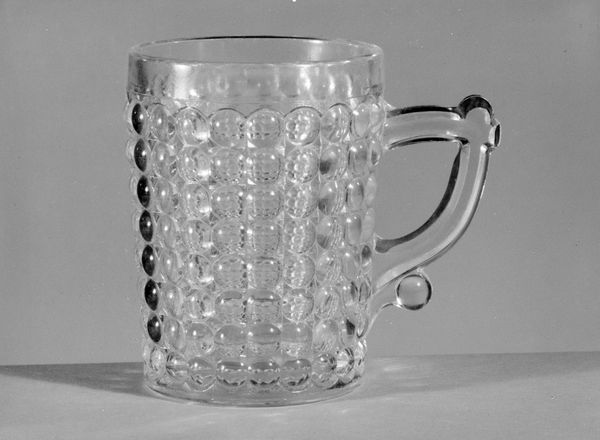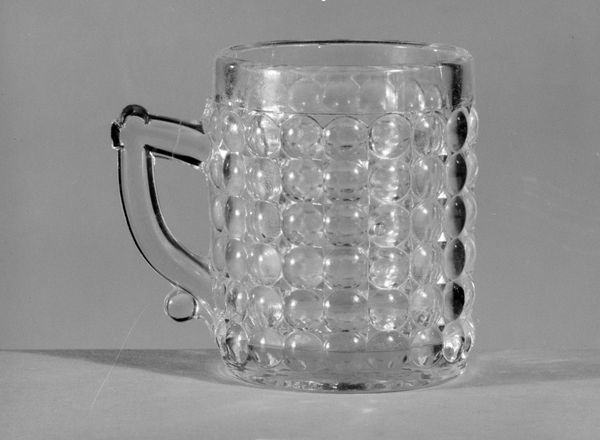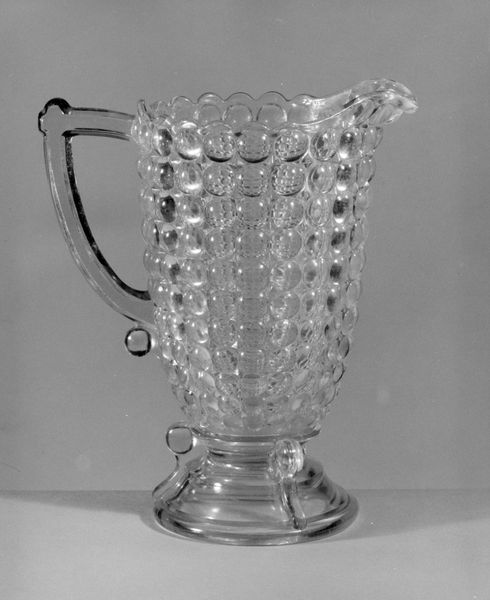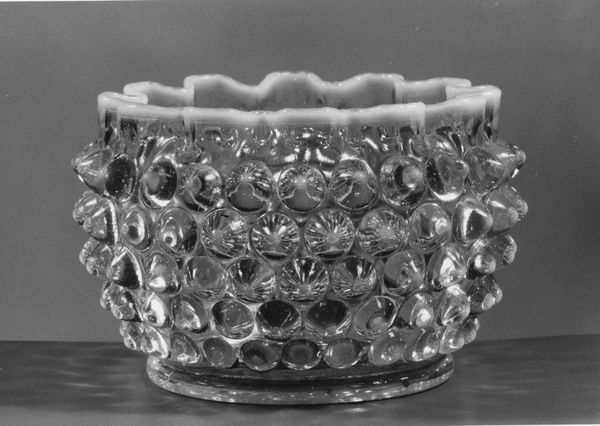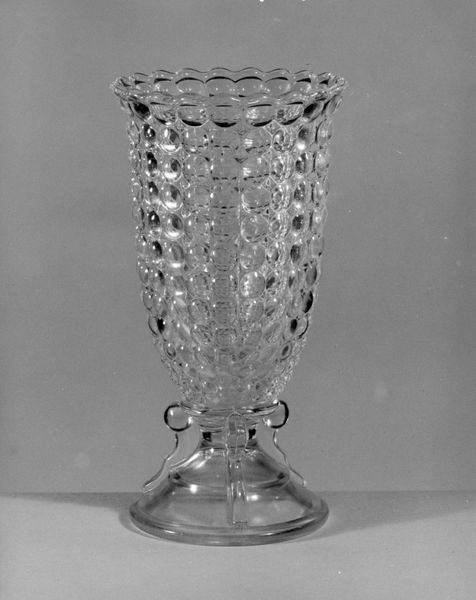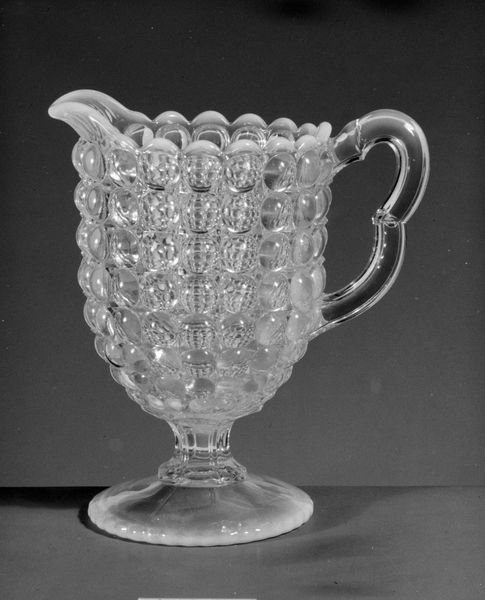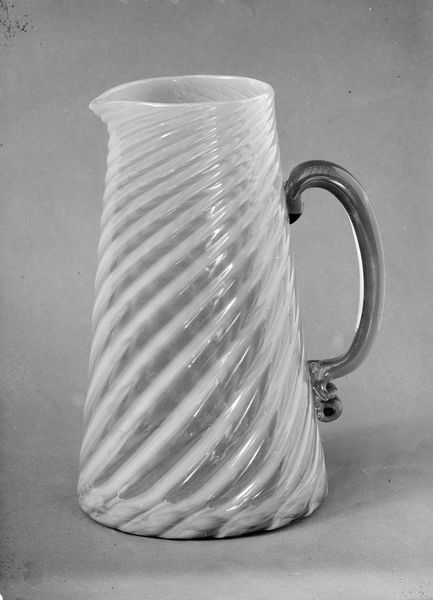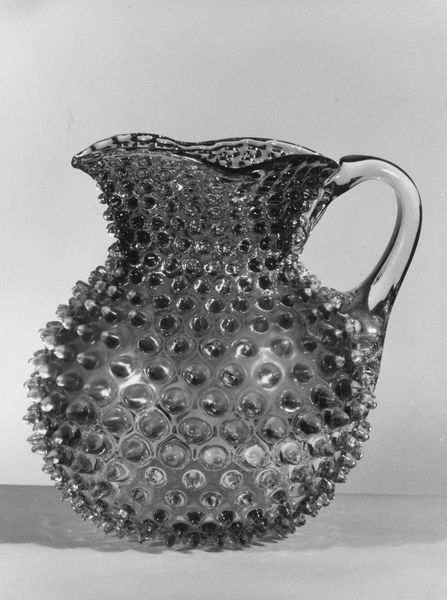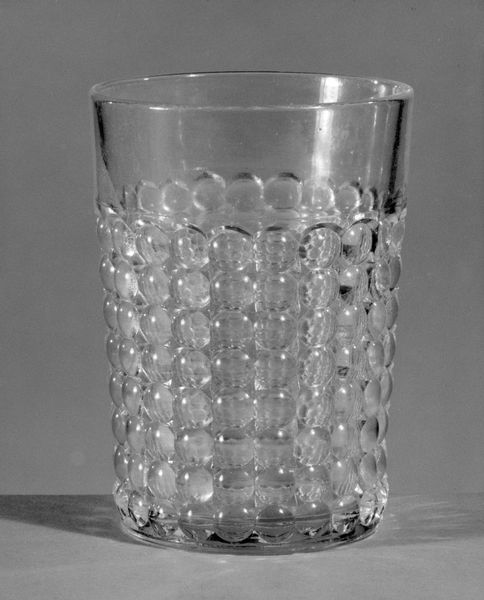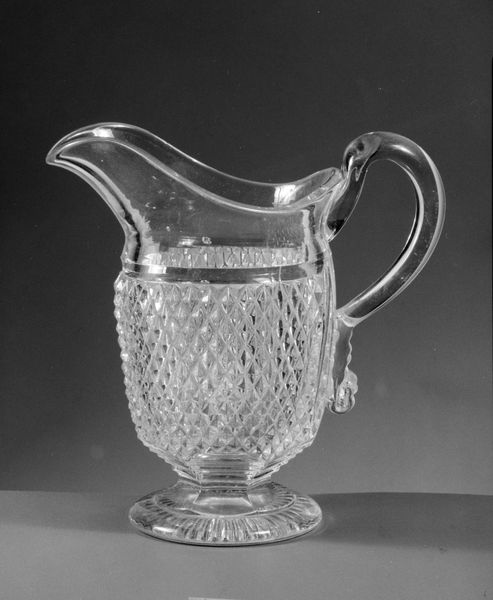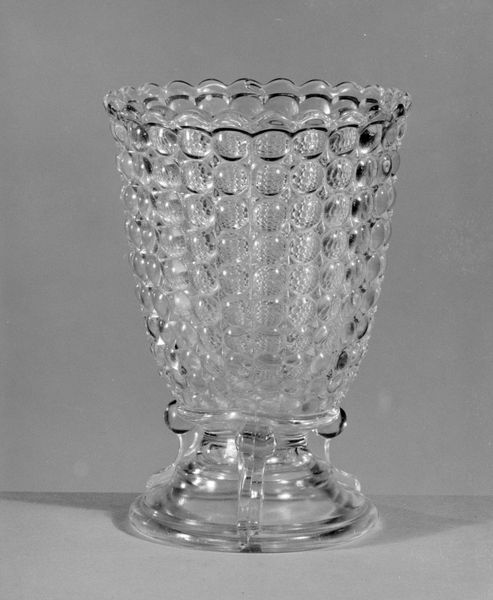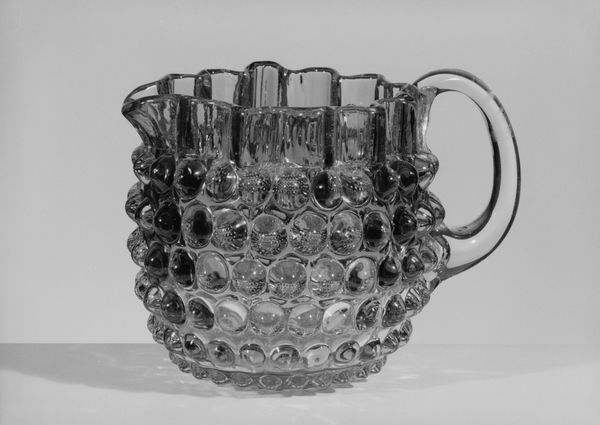
photography, glass
#
photography
#
glass
#
macro
#
united-states
#
macro photography
Dimensions: H. 2 in. (5.1 cm); Diam. 1 13/16 in. (4.6 cm)
Copyright: Public Domain
Editor: This "Mug," made sometime between 1870 and 1890, appears to be made of glass. It is by Adams and Company. It seems quite ordinary at first glance, a simple drinking vessel. How can we think about this object beyond its function? Curator: A purely functional reading ignores the inherent social dimensions. What can we infer about its production? The molded glass indicates industrialization, yes? This democratizes access to what might have once been luxury. But let’s consider the labour involved. Editor: So, while it might seem simple, it points to a shift in production. Were pieces like this considered art or purely utilitarian at the time? Curator: That is precisely the question. The lines are intentionally blurred. In an era defined by growing factories and a rising middle class, objects like this redefined domestic life. Consumption became increasingly important. Mass production means accessible goods but also… Editor: Less individualized craftmanship? Did that lead to anxieties about authenticity? Curator: Exactly. And consider the aesthetic value placed on the 'bubble' pattern. Does this strive for beauty compensate for mechanical production, or is it purely ornamental and reflective of consumer desires and preferences during that time? Is the maker trying to trick the eye, replicate older designs? Editor: That’s fascinating. I had only considered its simple function, now I see how it intersects with economic and social history. Curator: Indeed. Even this ‘simple mug’ allows us to see production and consumption practices during a specific moment in American history. The everyday becomes extraordinary.
Comments
No comments
Be the first to comment and join the conversation on the ultimate creative platform.
